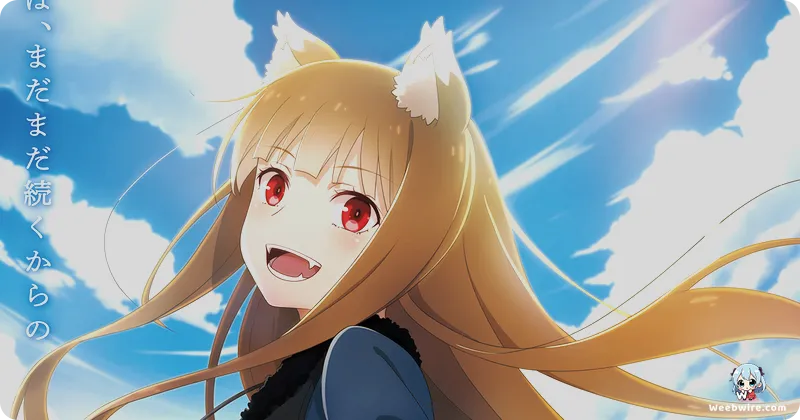Spice and Wolf II: A Deep Dive into the Enduring Brilliance of a Fantasy Masterpiece

In a landscape often dominated by explosive action and grand magical sagas, Spice and Wolf II, which premiered in 2009, continues to shine as a profound testament to the art of intricate storytelling, compelling dialogue, and masterful character evolution. This highly anticipated second season seamlessly builds upon the beloved original, solidifying its standing as an unparalleled treasure within the fantasy genre. It meticulously chronicles the ongoing odyssey of the astute merchant Kraft Lawrence and the ancient, enigmatic harvest deity Holo, weaving a rich tapestry that intertwines sophisticated economic intrigue, deep philosophical explorations, and a uniquely heartwarming, unconventional romance. Yet, beyond its widely recognized premise, the series is brimming with captivating facets and intriguing insights that underscore its brilliance and explain its lasting global appeal.
One of the most remarkable, though often subtly appreciated, hallmarks of Spice and Wolf II is its unwavering commitment to authentic medieval economics. Diverging sharply from typical fantasy narratives where trade and currency merely serve as backdrop, here, they are the very engine of the plot. Bolstered by author Isuna Hasekura's own background in economics, the series delivers remarkably realistic portrayals of market volatility, complex trade negotiations, the nuances of currency arbitrage, and even the perilous allure of speculative bubbles. Lawrence's trials and triumphs are inextricably linked to his financial acumen and his adept navigation of the cutthroat world of commerce. This grounded realism not only anchors the fantastical elements of Holo's existence but also provides an unexpected educational dimension, compelling viewers to genuinely invest in the characters' financial dilemmas. It stands as a rare gem within fantasy anime, where a grasp of concepts like the gold standard or supply and demand becomes pivotal to appreciating the narrative's tension and ultimate resolutions.
Further adding to its allure is the exquisite characterization of Holo. Though an ancient wolf deity, her depiction transcends the clichés of a stoic or omnipotent goddess. Holo is a remarkably multifaceted being, displaying a full spectrum of human-like emotions and delightful idiosyncrasies. Her insatiable craving for apples and delectable cuisine, her occasional moments of childish pique, her razor-sharp wit that frequently outmatches Lawrence's, and the profound, centuries-old loneliness stemming from her isolated existence collectively forge one of anime's most unforgettable heroines. Her wisdom runs deep, yet she often grapples with a world in flux and the fading belief in ancient deities. Fans are particularly charmed by her expressive tail and ears, which often betray her true feelings even when her words are carefully chosen. These subtle yet powerful details add layers of depth, making her profoundly relatable despite her supernatural origins.
The evolving dynamic between Holo and Lawrence is a masterclass in nuanced character interaction. Their relationship blossoms not through grand romantic gestures, but through an intricate dance of witty repartee, shared adversities, mutual respect, and intellectual sparring. Their conversations are a consistent highlight, brimming with philosophical debates, playful teasing, and moments of genuine emotional vulnerability. It's a partnership forged on trust and a dual ambition: for Lawrence, to amass sufficient wealth to establish his own shop, and for Holo, to journey back to her fabled homeland of Yoitsu. The journey itself, punctuated by continuous challenges and the slow, organic development of their bond, forms the very soul of the story, ensuring their eventual romantic undertones feel richly earned and deeply satisfying.
An interesting footnote in the series' production history involves the shift in animation studios for the second season. While Brain's Base helmed the inaugural season, Studio Imagin took the reins for Spice and Wolf II. Remarkably, this transition was executed with seamless precision, with Imagin successfully preserving the distinctive art style, beloved character designs, and immersive atmospheric quality that fans had come to cherish. This visual consistency speaks volumes about the meticulous foundational work and vigilant oversight that ensured the series' aesthetic integrity remained intact, allowing audiences to remain fully engrossed in Lawrence and Holo's world without any jarring artistic disruptions.
Equally commendable, though occasionally underappreciated, are the stellar voice acting performances. Jun Fukuyama as Kraft Lawrence and Ami Koshimizu as Holo deliver truly exceptional portrayals. Their chemistry is undeniably palpable, breathing life into the intricate dialogue with impeccable comedic timing, profound emotional depth, and nuanced delivery. Koshimizu's remarkable ability to convey Holo's ancient sagacity, playful mischief, and underlying melancholy, paired with Fukuyama's depiction of Lawrence's pragmatism, burgeoning affection, and occasional exasperation, are pivotal in rendering these characters incredibly real and endearing. For legions of fans, their voices are Holo and Lawrence, making it almost impossible to envision anyone else embodying these iconic roles.
Finally, a lesser-known yet profound aspect of the series is its significant impact on the burgeoning subgenre of "economic fantasy" or "slice-of-life fantasy." Spice and Wolf powerfully demonstrated that a fantasy narrative doesn't necessitate epic battles or world-saving quests to be profoundly compelling. Its deliberate focus on intricate character relationships, intelligent discourse, and practical, grounded challenges, all set against a beautifully crafted backdrop, paved the way for subsequent series that prioritize detailed world-building and human (or human-like) drama over bombastic action. This enduring legacy is a testament to the series' singular vision and its remarkable capacity to deeply resonate with an audience yearning for storytelling beyond the conventional. Spice and Wolf II continues to be celebrated not merely as a sequel, but as a crucial chapter in a narrative that masterfully fuses the mundane with the magical, leaving an indelible mark on the anime landscape.
Credits
Spice and Wolf II
Author
Isuna Hasekura
Cover Art
Juu Ayakura
Studio
Imagin
Publisher
ASCII Media Works
Producers





